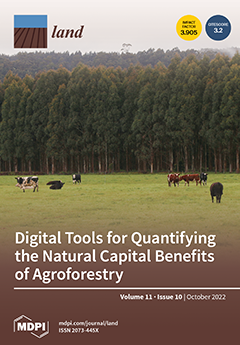Open AccessReview
Current Practices and Prospects of Climate-Smart Agriculture in Democratic Republic of Congo: A Review
by
Katcho Karume, Jean M. Mondo, Géant B. Chuma, Angele Ibanda, Espoir M. Bagula, Alex Lina Aleke, Serge Ndjadi, Bintu Ndusha, Pascaline Azine Ciza, Nadege Cirezi Cizungu, Daniel Muhindo, Anthony Egeru, Florence Mayega Nakayiwa, Jackson-Gilbert M. Majaliwa, Gustave N. Mushagalusa and Rodrigue B. Basengere Ayagirwe
Cited by 9 | Viewed by 5077
Abstract
Climate-smart agriculture (CSA) is one of the innovative approaches for sustainably increasing the agricultural productivity, improving livelihoods and incomes of farmers, while at the same time improving resilience and contributing to climate change mitigation. In spite of the fact that there is neither
[...] Read more.
Climate-smart agriculture (CSA) is one of the innovative approaches for sustainably increasing the agricultural productivity, improving livelihoods and incomes of farmers, while at the same time improving resilience and contributing to climate change mitigation. In spite of the fact that there is neither explicit policy nor practices branded as CSA in Democratic Republic of Congo (DRC), farmers are utilizing an array of farming practices whose attributes meet the CSA criteria. However, the intensity, distribution, efficiency, and dynamics of use as well as the sources of these technologies are not sufficiently documented. Therefore, this review paper provides a comprehensive evidence of CSA-associated farming practices in DRC, public and private efforts to promote CSA practices, and the associated benefits accruing from the practices as deployed by farmers in the DRC. We find evidence of progress among farming communities in the use of practices that can be classified as CSA. Communities using these practices are building on the traditional knowledge systems and adaptation of introduced technologies to suit the local conditions. Reported returns on use of these practices are promising, pointing to their potential continued use into the future. While progressive returns on investment are reported, they are relatively lower than those reported from other areas in sub-Saharan Africa deploying similar approaches. We recommend for strategic support for capacity building at various levels, including public institutions for policy development and guidance, extension and community level to support uptake of technologies and higher education institutions for mainstreaming CSA into curricula and training a generation of CSA sensitive human resources.
Full article
►▼
Show Figures





